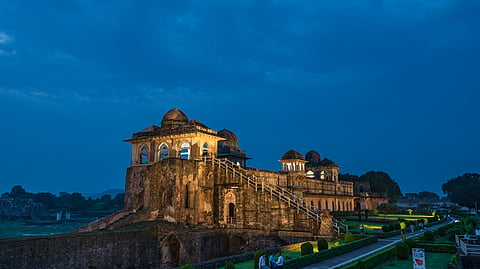
- Destinations
- Experiences
- Stay
- What's new
- Celebrating People
- Responsible Tourism
- CampaignsCampaigns
- SubscribeSubscribe
- Buy Now

In a significant step towards enhancing tourist infrastructure and making it more accessible, the Madhya Pradesh government has introduced extensive improvements at four of its major heritage sites, namely, Maheshwar, Mandu, Dhar and Orchha. The step comes in as a leap towards inclusive tourism and is in alignment with the state's commitment to equitable cultural experiences. This effort seeks to make people with disabilities more visible at heritage sites, rendering them with the facilities they require for easy movement, access and safety.
Spearheaded by the Madhya Pradesh Tourism Board under their project "Accessibility Infrastructure and Development", the enhancements include the installation of ramps, tactile pathways, Braille signage, accessible restrooms and audio guide systems. These features not only make the sites more inclusive for exploration of the state's rich heritage but also ensure assistance to visitors with locomotor, visual, auditory and intellectual disabilities.
Important cultural sites in Maheshwar, including the Devi Museum, Ram Kund, Narmada Resort, and venerated temples Kaleshwar and Jaleshwar, have undergone renovations. Additionally, Kamani Gate, a historically important entrance, is now easier to reach.
Accessible infrastructure has been added to Mandu, which is renowned for its Afghan architecture and picturesque surroundings. This includes the Jami Masjid, Hoshang Shah's Tomb, Rani Roopmati Pavilion, Baz Bahadur Palace, and Delhi Darwaza. These upgrades guarantee that individuals with disabilities can enjoy Mandu's architectural splendour and legends without any obstacles.
At Dhar, assistive elements have been installed at the historic Bagh Caves and the Bagh Museum. All visitors can now more easily explore these caves, which are well-known for their Buddhist murals.
The Raja Mahal, Jahangir Mahal, Chhatris (cenotaphs), and Panchmukhi Mahadev Temple—iconic buildings that attract pilgrims and history buffs alike—are all part of the accessibility initiatives in Orchha, one of India's most charming old towns.
The project comes backed by the proposed funding from the Ministry of Social Justice and Empowerment. This collaboration between central and state agencies touch upon the shared commitment to fostering inclusivity in tourism, ensuring that people of all abilities have the right to heritage and historical assets.
“Under the guidance of Chief Minister Dr. Mohan Yadav and the leadership of Minister of State for Tourism, Culture and Religious Trusts & Endowments (Independent Charge) Shri Dharmendra Bhav Singh Lodhi, we are working to have more of Madhya Pradesh’s iconic locations added to the UNESCO World Heritage list. Our goal is to make these destinations not only more visited, but more inclusive. This is a step towards enabling every individual, regardless of physical ability, to experience the timeless beauty of our heritage,” remarked Sheo Shekhar Shukla, Principal Secretary, Tourism, Culture, and Religious Trusts & Endowments Department, and Managing Director, Madhya Pradesh Tourism Board.
Madhya Pradesh is establishing a significant example for cultural preservation throughout India by emphasising accessible tourism. This endeavour not only safeguards and promotes access to monuments but also expands the definition of tourism to encompass all citizens—emphasising dignity, independence, and involvement for persons with disabilities.
Visitors with disabilities can anticipate a more comfortable and enterprising experience when touring Madhya Pradesh's historical sites owing to these advancements. On account of the state's dedication to inclusivity, everyone, regardless of physical ability, can share and enjoy the stories and beauty of its legacy. As a leader in accessible heritage tourism, Madhya Pradesh provides a model for other areas hoping to combine compassion with conservation to make history really accessible to all.
